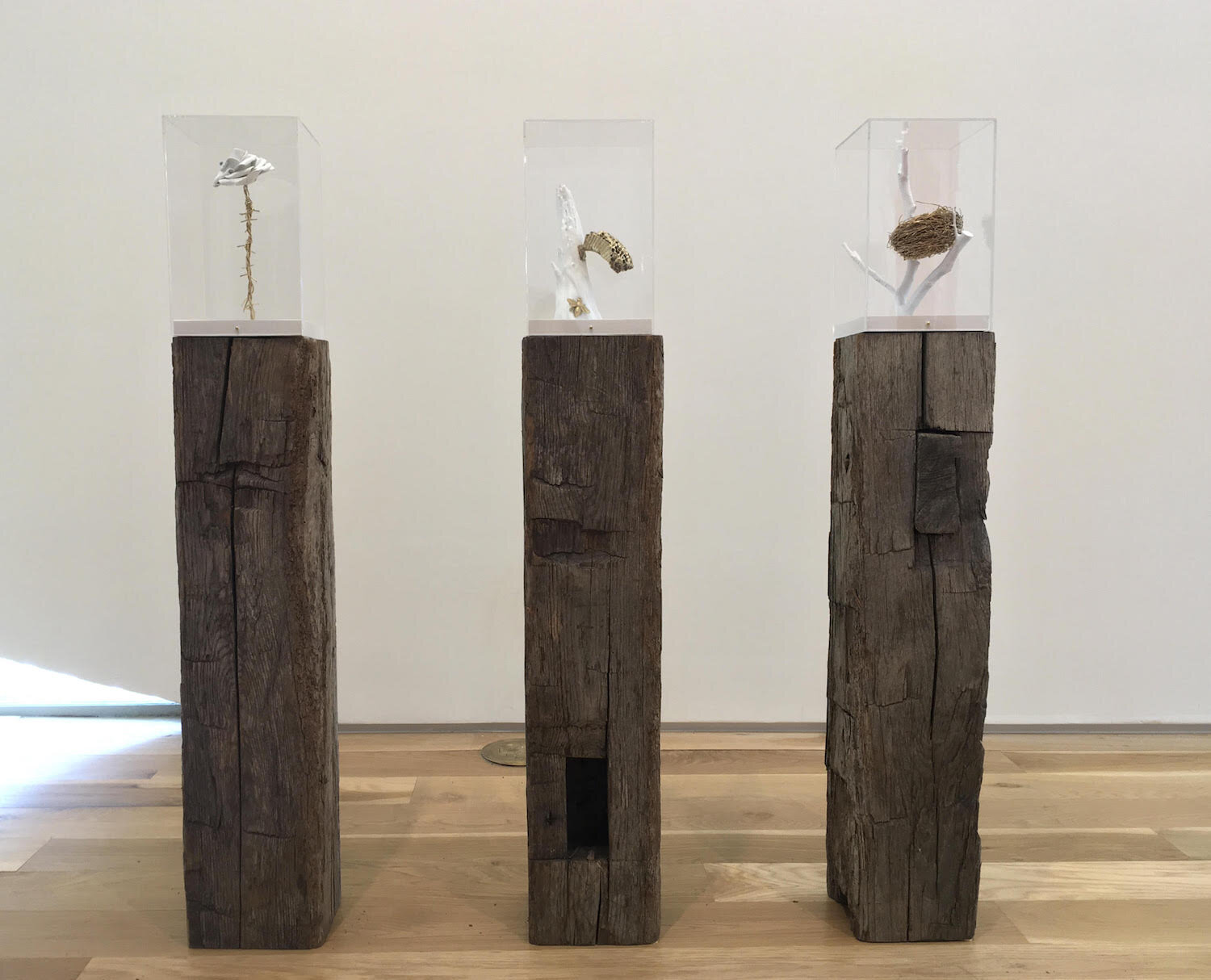BEING AND EVERYTHING: Works by Dawn DeDeaux
The Transart Foundation for Art and Anthropology
1412 W Alabama St, Houston, TX 77006
The Museum District across the street from The Menil and Rothko Chapel
By appointment until further notice. Ph. 713 8054207












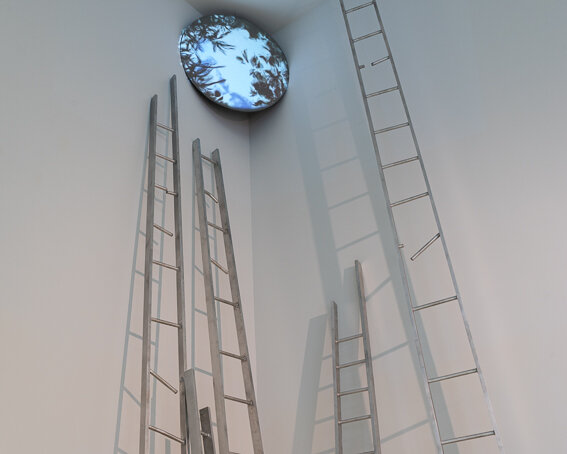









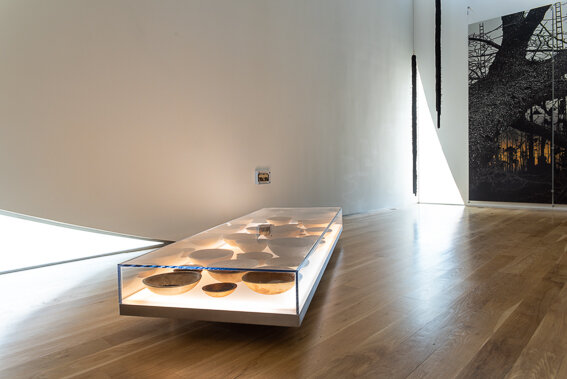

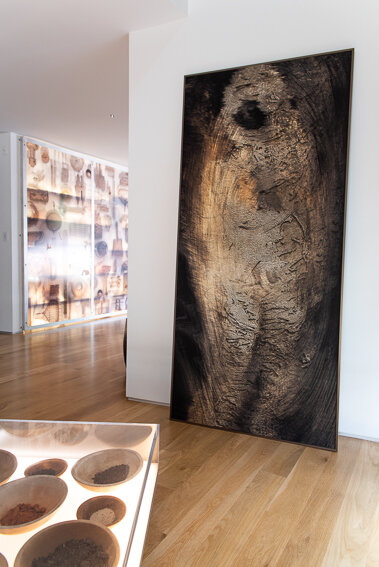



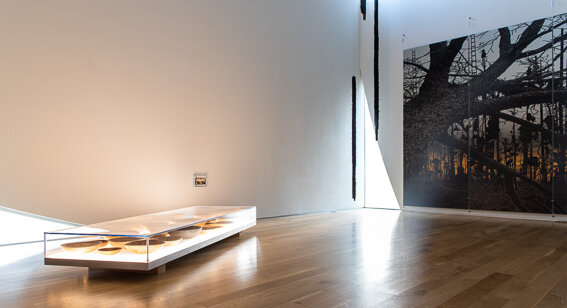




Photos by artist Beatriz Bellorin
BEING AND EVERYTHING:
POST ART by Dawn DeDEAUX
Essay by Surpik Angelini
Founding Director
Transart Foundation for Art and Anthropology
Long regarded as a futurist artist, Dawn DeDeaux’s multimedia, interdisciplinary installations overture art, anthropology, philosophy and science to framework a post human, post anthropocene discourse of extinction. (1)
DeDeaux's Post Art trajectory was sharpened by Hurricane Katrina’s devastation of her habitat and most of her work, and the escalating extinction rate of planetary species. Her art turned more purposely to the materiality of the object, not as a representation of reality as we know it, nor as a found artifact remitting to Duchamp’s "readymades." Instead, DeDeaux embraces an all-encompassing notion of “object" understood as “everything” - an “everything” where even the causality of all things can be fathomed to radiate from the “object” itself into the unknown. (2)
THE MORNING AFTER: Family Home / AUGUST 6, 2005. Dawn DeDeaux
Emerging out of the residue of planetary exile, DeDeaux’s objects are also conceived as a longing, an “algama” (Greek for treasure). With a potentially regenerative DNA for reproducing themselves - anything and everything at any time everywhere - DeDeaux calls to mind Graham Harman's image of an object "like a retrovirus injecting (its) DNA back into every object (it) encounters."
The experience of a “mise en scene” by DeDeaux evokes a subliminal, grander assemblage through the ghostly presence of its parts: rusted tools, shattered glass, debris, charred beams, burned books, postcards, collected ashes, soil from different parts of the world, broken idols, wooden and glass ladders and more. These post-apocalyptic objects no longer belong to the earth’s ecology: they have been excised, cut off, uprooted. But their uncanny appearance paradoxically retain the lost aura Walter Benjamin speaks of in his description of “Art in the Age of Reproduction” - reproduction being key to what DeDeaux’s work entails. Digitally seeping through a translucent printing process, her carefully conjured images reflect the tattered remains of a once-vibrant material world.
Dawn DeDeaux / Portrait Holding Dirt, Luxor Egypt, 1986. Photo by Cheryl Koralik
The objects DeDeaux selects and reproduces are neither projections looking forward nor memories looking backwards in time. They have lost forever their context. They no longer belong to culture. Culture - like our earth – is pulverized, evoking the sensation of standing in the sands of Egypt, where mineral particles and minute man-made shards mix indiscriminately in the topsoil -- an epiphany-induced observation for DeDeaux while walking through Luxor in 1982, mirroring Jane Bennett's encounter with a trash cluster of plastic debris and a rat on a Baltimore street that sparked the journey towards her seminal book Vibrant Matter.
Before stripping her own objects bare, in the early 1990s DeDeaux set hard focus on the absence of environmental ethics and the engines of extinction - resulting in the groundbreaking immersive media work that premiered at the 1996 Olympics, The Face of God, in Search of; and her first extensive landscape series - Postcards to Teddy Roosevelt while Thinking of Yves Klein - conceived for the Aldrich Museum of Contemporary Art's exhibition Landscape Reclaimed. In the series DeDeaux appears in self-portraiture, appropriating Yves Klein's daring flight far beyond his own Parisian window and into the deep abyss of American landscapes defaced by unchecked industry; standing in stark contrast to Teddy Roosevelt's romanticized celebration of the west.
Decades later DeDeaux’s Post Art again re-kindles the relevance of Yves Klein’s art, if seen through a post human, post anthropocene perspective. Klein’s anthropometries, his uncanny human silhouettes in blue, can now be understood as visions inspired by the ghostly shadows of post-human scenes on the walls of Hiroshima. Likewise, his announcement of mankind’s future telepathic communication can be seen as a presage of art at the end of time. Through powerful rhyzomes such as these, both Klein’s figurative shadows and DeDeaux’s dematerializing figures that vaporize into the void of outer space can be joined through communicating vessels, transcending the years that separate them, as precursors of Post Art. (3)
To conclude my introduction, I would like to quote fragments of a poem written by DeDeaux after her first visit to TransArt, just over a year ago. Her words seem to have sprinkled the seeds found in her TransArt exhibition Being and Everything.
"..the axis of objects...to reflect all things...
the caves within black holes filled with all matter... congealed into the gestalt...
gestures of humility...
being and nothingness...everything...
we must explore
the small universe
that brought us together."
Surpik Angelini / March 2020
THE GLASS FLOOR (detail) by Dawn Dedeaux, 2007
The Vanquished Series: From Mesopotamia to the Stars, 90” x 40” / Dawn DeDeaux
SARTRE’S TRENCH: Between Being and Nothingness, Digital Drawing by Dawn DeDeaux, 1994
About the Exhibition Title / BEING AND EVERYTHING
The exhibition title Being and Everything is inspired by a conceptual series DeDeaux created a few decades back surrounding historical ironies. Among the series is a work titled Sartre's Trench that highlights unusual circumstances belonging to the relationship between German philosopher Martin Heidegger's work Being and Time (1927) and its influence on French philosopher Jean Paul Sartre's subsequent tome Being and Nothingness (1943).
Sartre spent two years mastering German to read Heidegger’s Being and Time. Ironically, the war broke out between France and Germany and Sartre began his reading of Heidegger from a French trench and finished the book as a prisoner of war in a German camp from 1940-41. DeDeaux’s animated drawings present Sartre as a shadow of a soldier sitting in the trench with a book and lantern. It is accompanied by sound of a man reading aloud in German with a French accent. Additional sounds of gunfire and arsenal explosions prompt flashes of light alternately illuminating backlit words embedded in the two earthen mounds: one offers the word “being” and the other gives only “nothingness”.
DIRT TABLE #1 / MotherShip: Dreaming of a Future Past, 2014 / Dawn DeDeaux
SWAN SONGS: As I Lay Dying Room (after Faulkner), 2008. Dawn DeDeaux
The Heidegger Thread Continues
Dedeaux shares that “in the decades that followed Sartre, new philosophical movements have emerged - Deconstruction, Post-Humanism, New Materialism… - and throughout most new theory there remains a connection to Heidegger, significantly for his stand to debunk human hierarchy in favor of an equitable inter-connectivity with other forms of life and objects. This is core to New Materialist thinking, and biologists and environmentalists have long since dethroned man as mega-culprit for planetary disruption. Most thinkers now advocate for a level playing field and a readdress of our relationships with animals, plants, inanimate objects and all matter. Vertical math isn’t adding up for me either so I am allowing myself to float within a cosmic current, inside the circular rotation of all matter.”
RANDOM OBJECTS/ Tool discards, rock, coral, and termite eaten wood sections on outdoor shelves/ Dawn DeDeaux compound Camp Abundance, 2019
THE GLASS FLOOR / Installation View, Dawn DeDeaux, 2007
ABOUT THE EXHIBITION SELECTIONS
Artist Dawn DeDeaux is an unlikely futurist based in an off-track neighborhood of ole’ town New Orleans. From here she builds spaceships in her backyard, and incessantly accumulates useless objects that fill all the nooks throughout her compound Camp Abundance. For the Transart exhibition she brings to Houston a sampler of obtuse objects and other curious matter such as shattered glass, plastic, dirt, hair, ash, bone, discarded rusted tools, water samples, a Mona Lisa postcard, ladders for escapes, a ring section from her spaceship, and a century-old iron cauldron to stir the aforementioned remnants of the post-industrial / post-colonial world into a new stew to ponder the past, the now and the future tense.
The exhibition aptly runs through the 2020 Hurricane Season, and fittingly presents a selection of works DeDeaux created in the aftermath of the 2005 Hurricane Katrina, acknowledging the climate catastrophes that have assaulted Houston in recent years. Works include her Water Markers series that measure varied flood water depths, and a version of her iconic Glass Floor - an illuminated ton of shattered glass hand-thrown by the artist into the spiral forms of both hurricanes and spinning galaxies. A few selections from her recent two-year-run MotherShip exhibition at MassMoCA will also be on view, including one of her 24' apocalyptic landscapes rendered on aluminum panels, and her haunting human figures deteriorating inside protective suits and ineffective armature.
While in residence at Transart, DeDeaux will further develop her series Souvenirs of Earth - producing newly configured object and matter assemblage grids that will be key feature components within the finale room of her upcoming career retrospective The Space Between Worlds, opening at New Orleans Museum of Art on October 16th (and running concurrent with Prospect.5, the city's international art triennial). These post-anthropocene offerings underway at Transart will include a 10' section of her massive Dirt Bowl Table that unites earth specimens from around the globe to convey the destiny of planetary life and culture; and a wall grid assemblage of semi-obscured, discarded tools in a work titled Objects Veiled.
Transart will also present her 2010 video installation One Drop, a circular projection of a drop of water that vibrates in the wind like an angry globe. The work overtures the global inter-connectivity of waterways and the fragile preeminence of water as the source of life.
TRANSART STUDY / 30’ Ring Angle with Landscape on West Wall / Dawn DeDeaux 2019
TRANSART STUDY One Drop Video (2010) with Escape Ladders (2020) by Dawn DeDeaux
TRANSART STUDY / Old Forster Fell into the Ring, Pyramid and Zeppelin, Shroud, Veiled Objects, Glass Floor (rear) / Dawn DeDeaux, 2020
TRANSART STUDY with "‘Where’s Mary Mural adaptation & sculpture, Dirt Table, Shroud, Tools / 2020
STUDY FOR DIRT TABLE / New Orleans Museum of Art and Transart Foundation for Art and Anthropology, Dawn DeDeaux 2019
WATER MARKERS / Varied Sizes ranging heights of 10’ to 4’, Dawn DeDeaux 2006-2017
ABOUT DAWN DEDEAUX
Dawn DeDeaux has merged art with new technologies for decades to broaden art and audience engagement. Her work has been exhibited in museums nationwide including the Whitney, Armand Hammer, the Aldrich Museum of Art, Ballroom Marfa, and a recent two-year exhibition at MASS MoCA. The New Orleans Museum of Art is organizing a career retrospective of her work titled The Space Between Worlds opening in October 2020 concurrent with the international triennial Prospect.5.
DeDeaux is an American Academy in Rome Prize recipient as the Knight Foundation Southern Artist, Rauschenberg Foundation Artist in Residence, and 2014 Prospect Alumna Artist of the Year. She was host/producer of Louisiana’s first radio arts program Art Now for NPR station WWNO, founding editor of the journal Arts Quarterly, among the eight original founders of the New Orleans Contemporary Arts Center and is on the Board of Directors of Prospect New Orleans. As educator she established experimental multimedia art programming for a 6,000 inmate facility and has been Visiting Artist at numerous institutions including Maryland Institute College of Art, University of North Carolina, Princeton University and is advisor / mentor to School of Visual Arts (SVA) MFA Program.
DeDeaux is a native New Orleanian born on Esplanade Avenue next door to the Edgar Degas House and has remained a downtown 7th ward resident throughout her life. In her early teens she studied art with afro-futurist Martin Green, who painted planetary collisions on the walls of his humble "shotgun" home. Among her offerings to the magical surrealism of New Orleans, she is the winner of the 1976 Demolition Derby as the only female in a field of 35 contenders.
New York Times / Dawn DeDeaux: Between Apocalypses by Penelope Green
Dawn DeDeaux / Photographer Using Space Travel / Aperture Magazine Editorial by Eva Diaz
Dawn DeDeaux Transart Exhibition / Country Road Magazine by Alexandra Kenon
FOOTNOTES / TRANSART SURPIK ANGELINI INTRODUCTORY ESSAY
(1) I use the term post-humanism in the sense of Francesca Ferrando to refer to any theory that is critical of traditional humanism and traditional ideas about humanity and the human condition. In referencing the Anthropocene, I refer to the proposed geological era when human activity has been the dominant influence on climate and the environment.
(2) This glimpse of 'The End' was unexpectedly offered to DeDeaux while standing in the disfigured landscape that was once her family home following its complete destruction by the winds and waves of Hurricane Katrina in 2005. This witnessing prompted her first large-scale reconfigurations of newly transformed matter such as shattered glass, earth, burnt wood and ash, and the crude mud markings (paintings) she created on salvaged wooden panels. In contrast to her prior year immersed in advanced digital output, she found herself fully 'unplugged' in an unrecognizable world with no form of communication to convey that "Everything has changed...everything." (See DeDeaux's essay for Art in America, ‘The Death of New Orleans' / October 2005.)
(3) The ongoing decade-long MotherShip Series by Dawn DeDeaux was first crafted around Stephen Hawking's hypotheses that mankind has 100 years to either correct the conditions for human life on earth, or figure out an exit strategy. His claim was made in a video interview nearly 15 years ago, and if true, that would give us only another 85 years. Since the claim, and prior to his death, Hawking would occasionally recalibrate his prediction.
Essay on "BEING AND EVERYTHING: a Post-ART" installation by New Orleans-based artist Dawn DeDeaux, by Surpik Angelini. Read it here
An Introduction about Dawn DeDeaux’s Exhibition “Being and Everything”: Selected Notes from Contributors Surpik Angelini, Dan Cameron, Dawn DeDeaux and Roberto Tejada. Download PDF here































